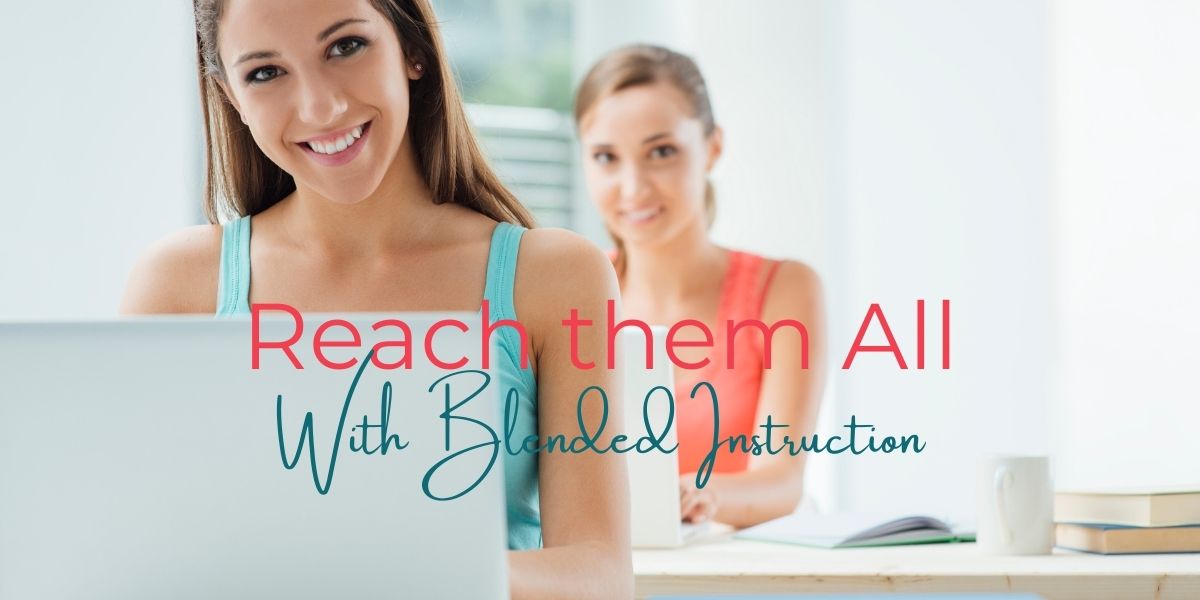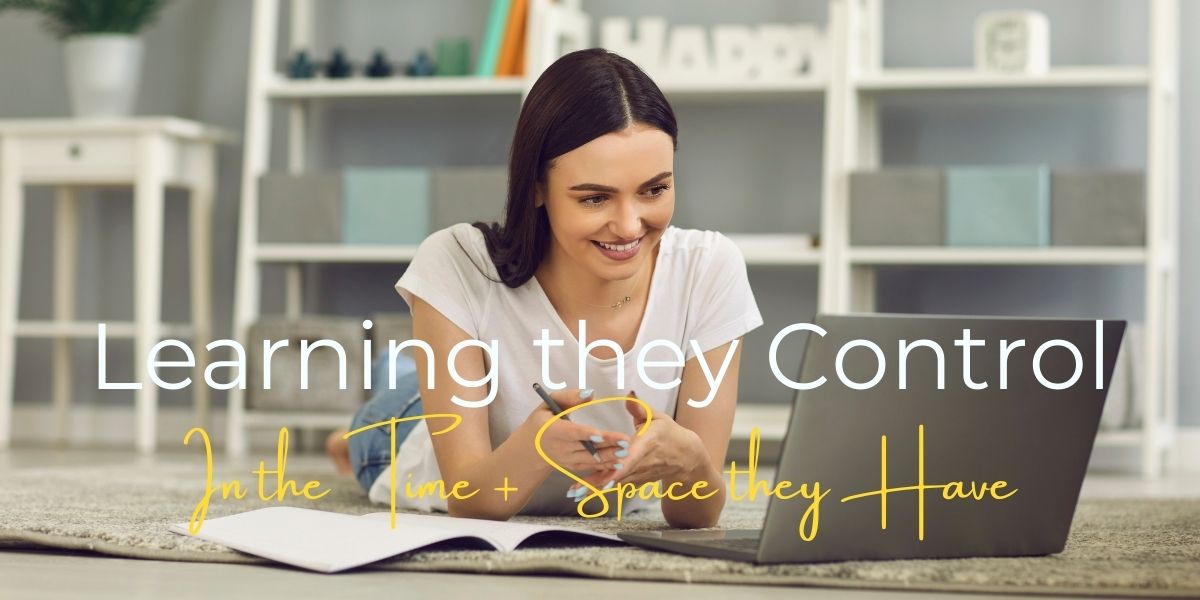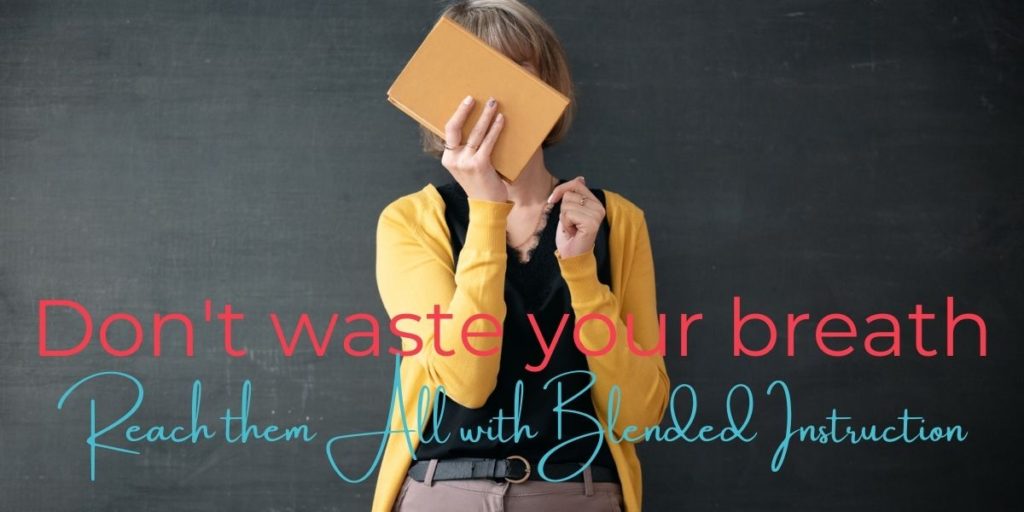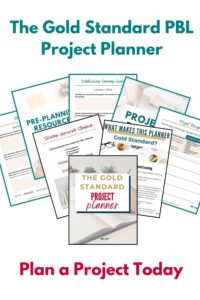Don’t waste time or breath teaching to the middle. Clone yourself and free up your time to work teaching to the individual with blended instruction.

What is blended instruction?
Blended instruction is a component of blended learning, where the direct instruction is replaced by technology enhanced instruction. And it happens to be one of the most effective strategies for teaching math! This often takes the form of instructional videos. Using instructional videos in place of traditional direct instruction, both teachers and students benefit from a more personalized class time. Two methods of blended instruction come to mind–asynchronous and synchronous.
- Synchronous- sometimes referred to as a flipped classroom. This model enables students to watch the instructional video for homework and work together synchronously in class activities.
- Asynchronous- enables students to express some autonomy and self-pacing over their work and watch videos on demand as they need it. This is more similar to the Modern Classroom model.
What are the benefits of blended instruction?
Teachers
Blended instruction, in essence, allows a teacher to clone themselves. They are able to create a recording of a lesson one time, and can use that lesson to teach each of their students the material in a way where students can customize their experience. Without feeling tied to the whiteboard/chalkboard, teachers are now free to move around the room and work one on one with their students. This also enables teachers to better support students through the use of small group instruction. The videos do not replace the teacher, but actually support the teacher in providing the best learning environment for their students.
Students
Students see numerous benefits when engaging in blended instruction as well. While watching the videos, students are able to pause, re-watch, speed up or slow down instruction to meet their needs. Additionally, blended instruction supports students with occasional or chronic absence. Students are able to receive the exact same instruction as their peers, regardless of whether or not they attended. Instead of coming in and asking what they missed, they can pick up where they left off.
The best benefit? We are no longer teaching too fast, or too slow for our students. Using the asynchronous blended instruction approach, students are able to access the lesson at the just right time for their learning journey. We are no longer wasting time (or breath!) teaching to the middle group of students. Rather, blended instruction enables us to teach high quality lessons to students at the time and place that is right for them.
Families
Families also benefit from teachers using blended instruction. For example, teachers can make the video lesson readily available via their Learner Management System or a class website, or even YouTube. Families can then use that video lesson as a resource to support their students at home. I have found this particularly helpful with math courses, as the standards and methods for teaching mathematics today are drastically different from when many of the parents

What’s the best blended instruction approach?
This is a subjective question, as each teacher will find an approach that works best for them. However, I am a big supporter of the Modern Classrooms Project . They fuse together blended instruction, self-pacing and mastery-based grading to create their Modern Classroom Models. As someone with prior experience with all of these practices, I was thrilled to find their streamlined process. And to think I stumbled upon it as a result of looking into the best practices for video creation. Here, you can read up on how Kareem Farrah, co-founder and CEO of Modern Classroom Project, shares what you need to know to make a great instructional video.
Now you may be wondering…
Can blended instruction work with project-based learning?
It’s no secret that I am a huge proponent of project-based learning in the classroom. And yes, without a doubt, blended instruction can not only support, but enhance the project-based learning experience. I’ve been fortunate to partner up with Modern Classrooms Project on a number of endeavors to discuss the way in which these methodologies support one another.
Resources
- Taking a Modern Approach to Project-Based Learning Read up on this overview of how project based learning can work virtually and during a pandemic!
- Project-Based Learning in a Modern Classroom Webinar Watch Kate Gaskill from MCP and I discuss the two approaches to education and how project-based learning can become more streamlined for teachers who implement a Modern Classroom approach with it
- Project-Based Learning in a Modern Classroom Podcast Listen in as I chat with Zach from MCP about how we each implement Modern Classroom models into our project-based learning classrooms!









